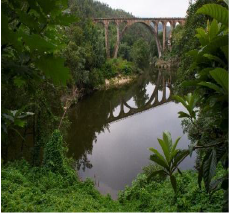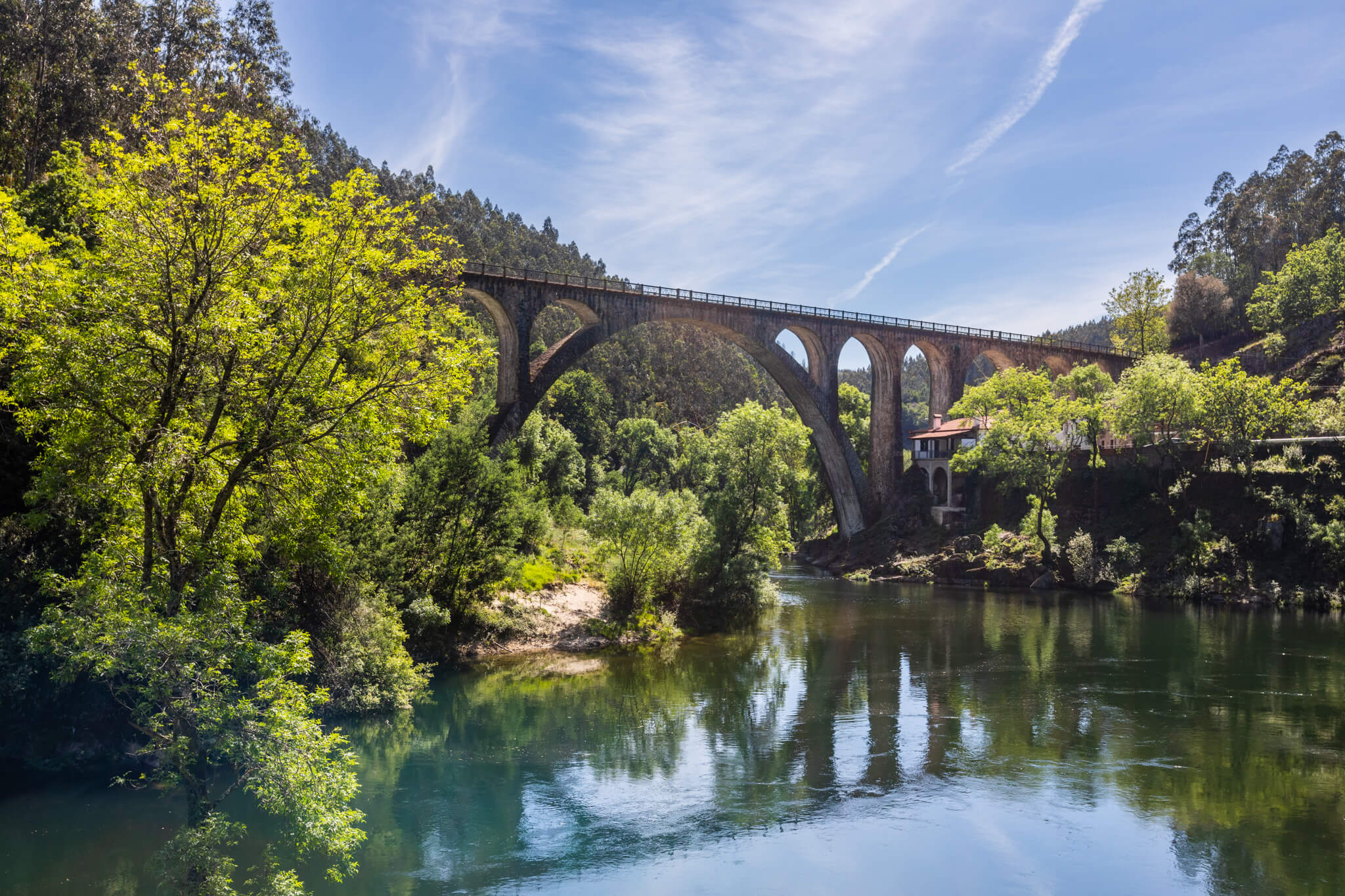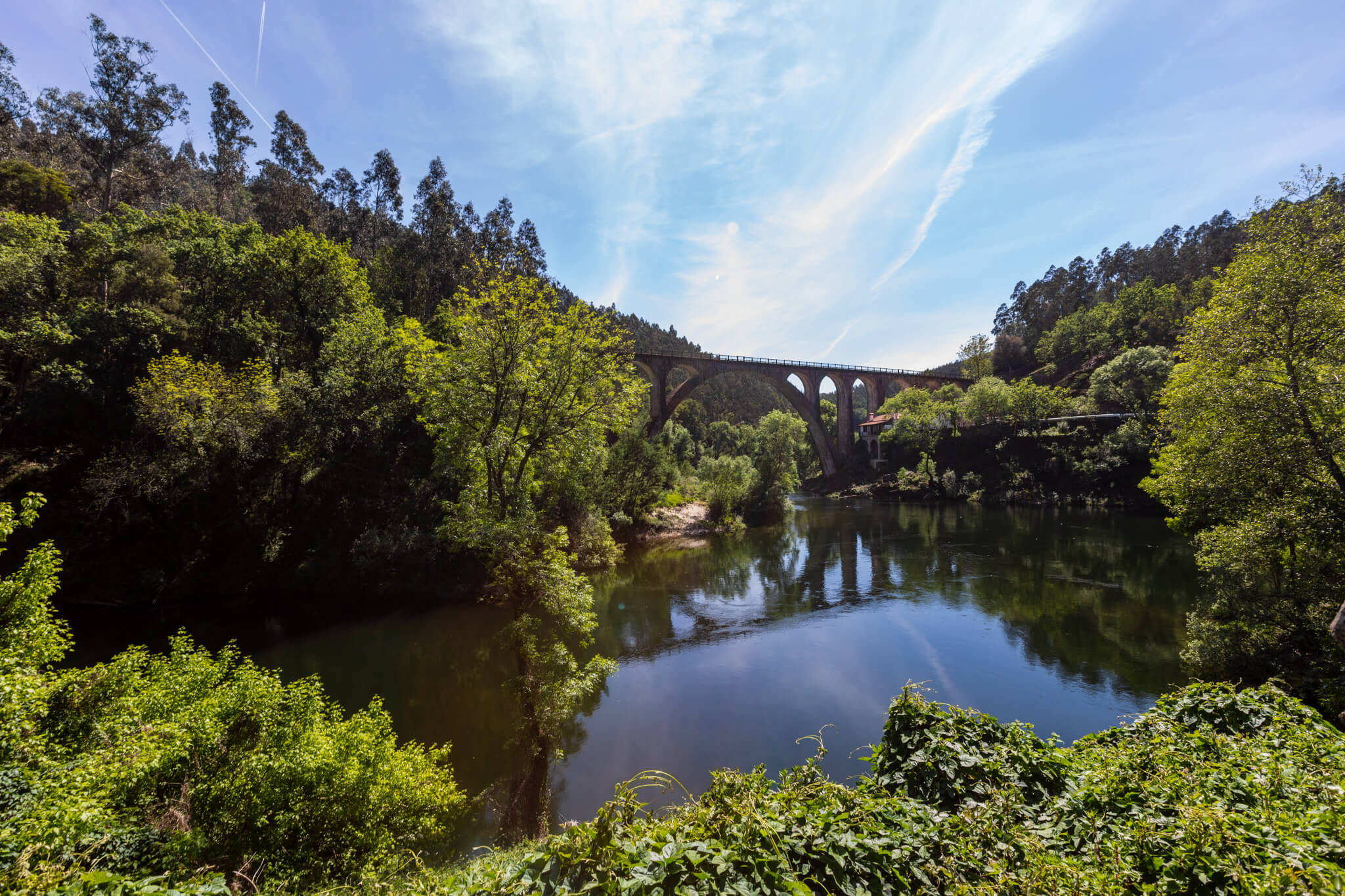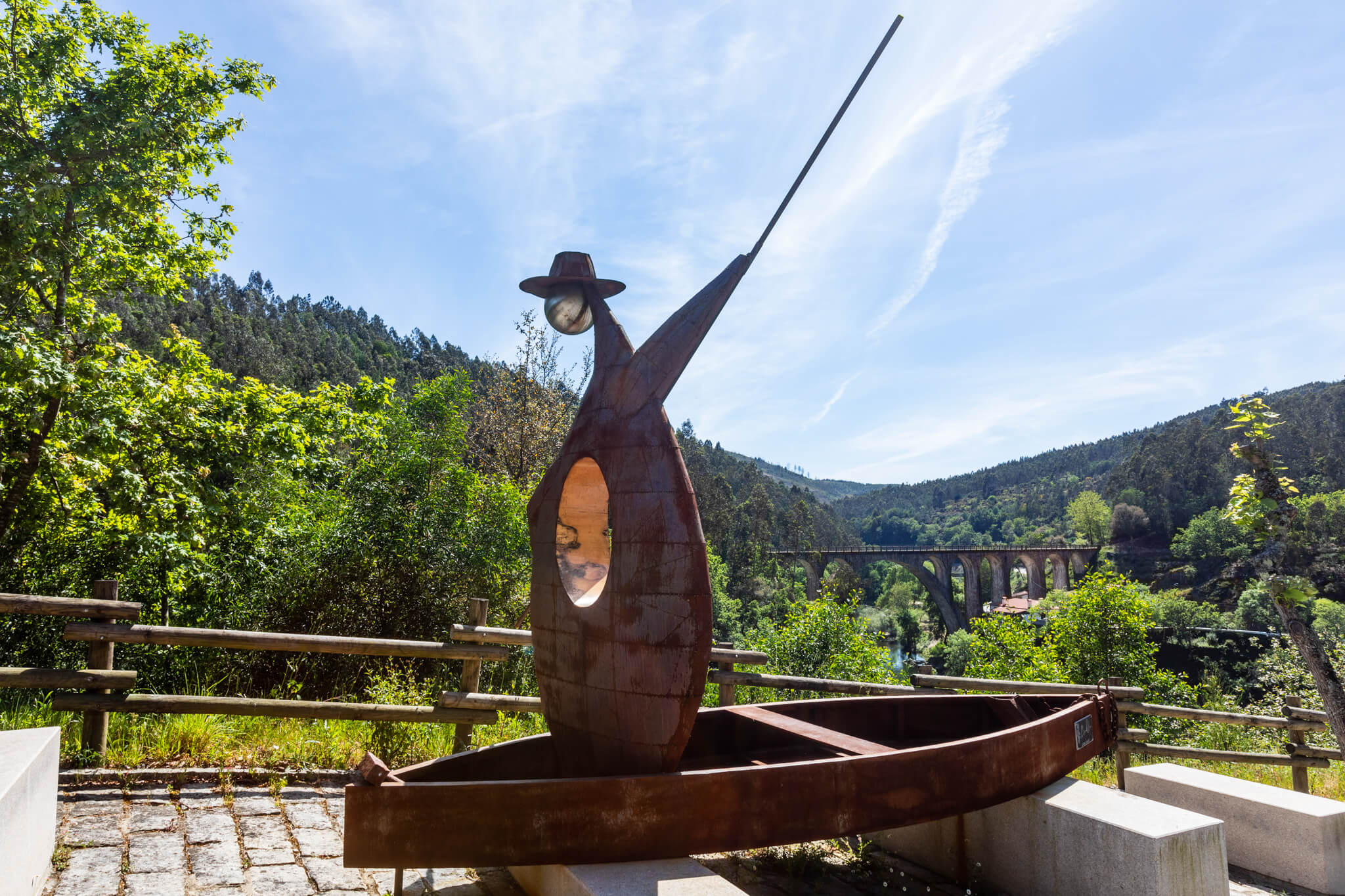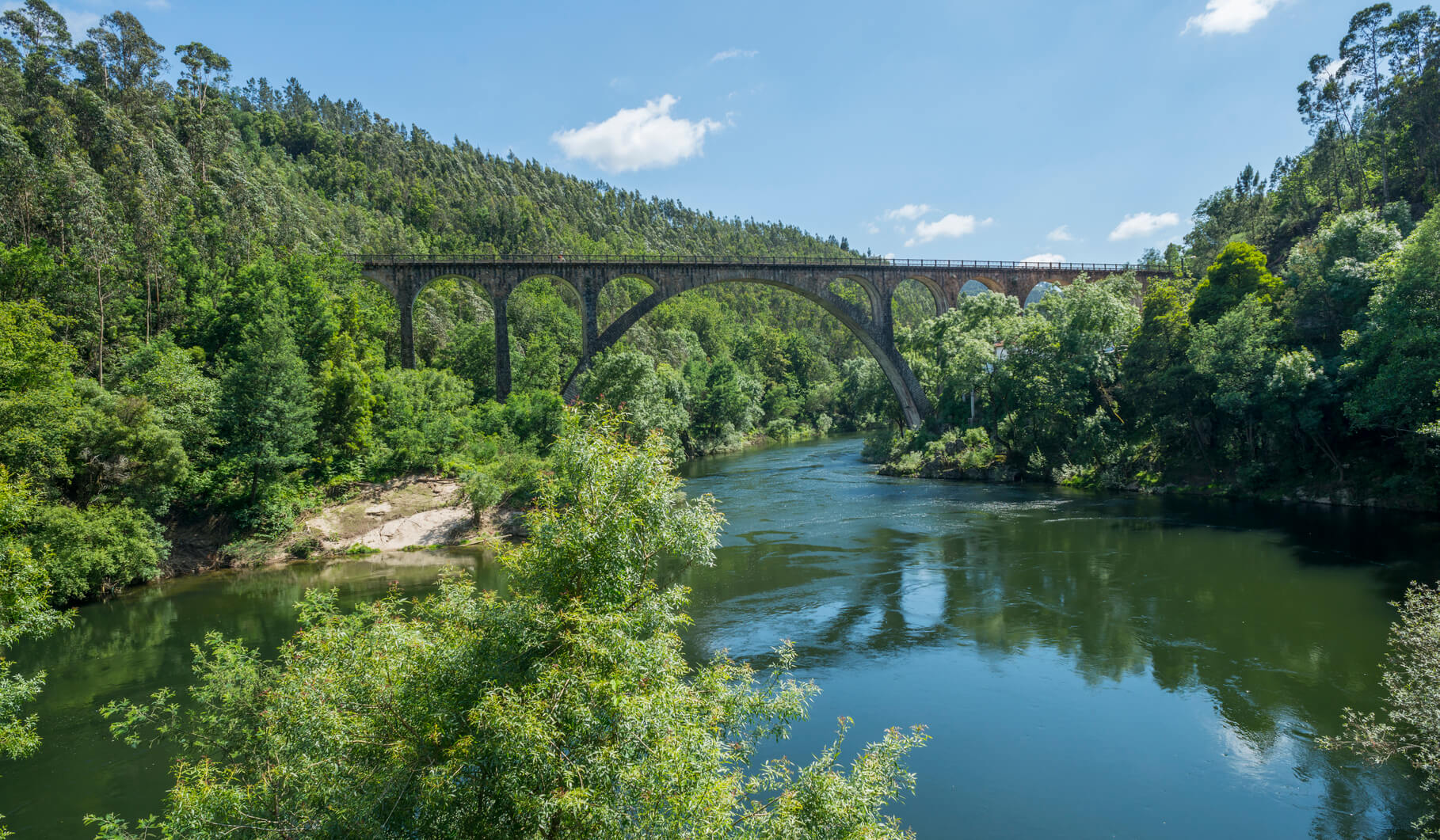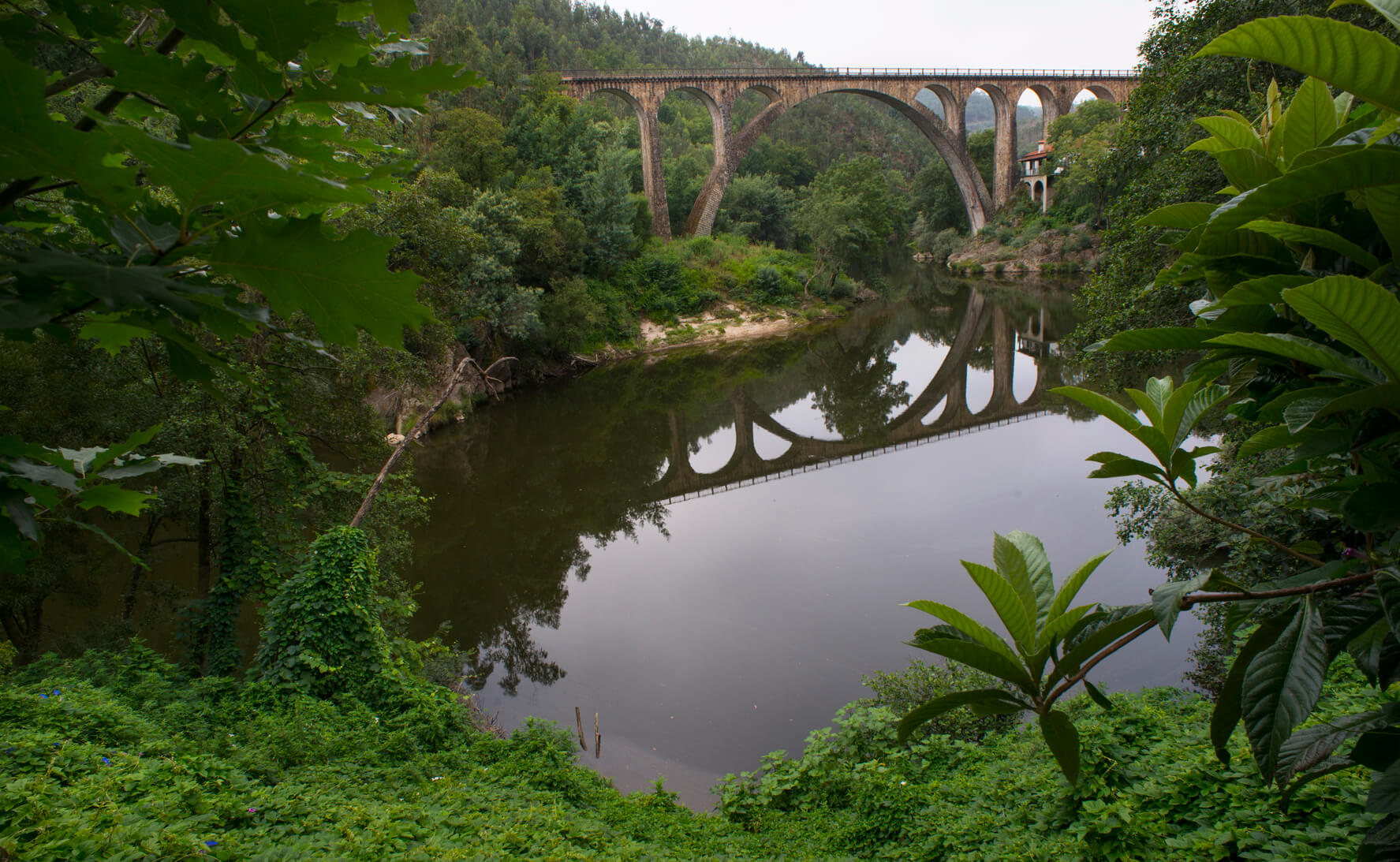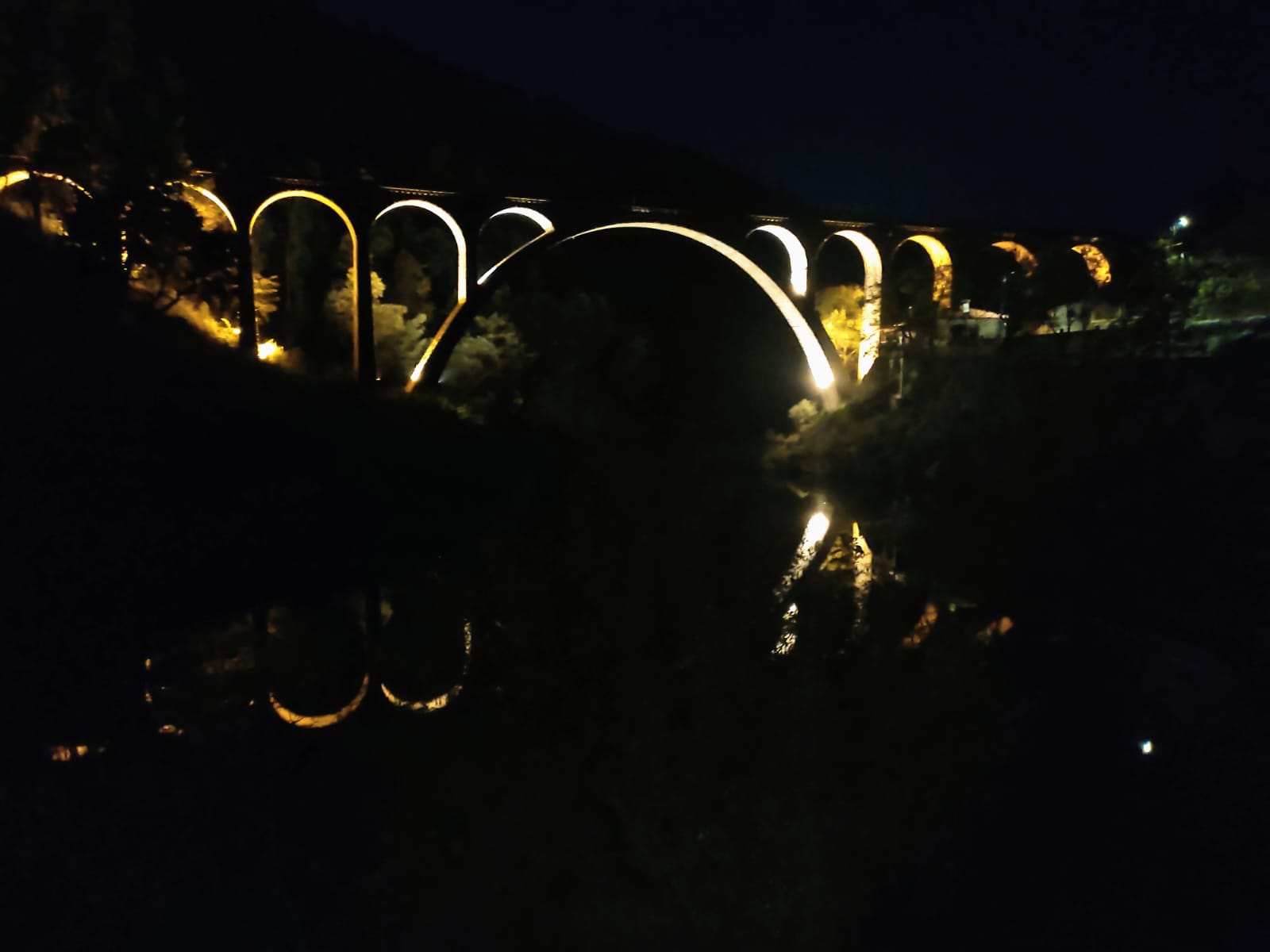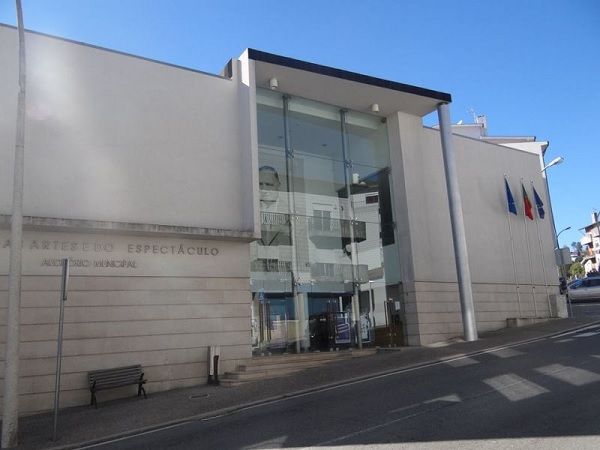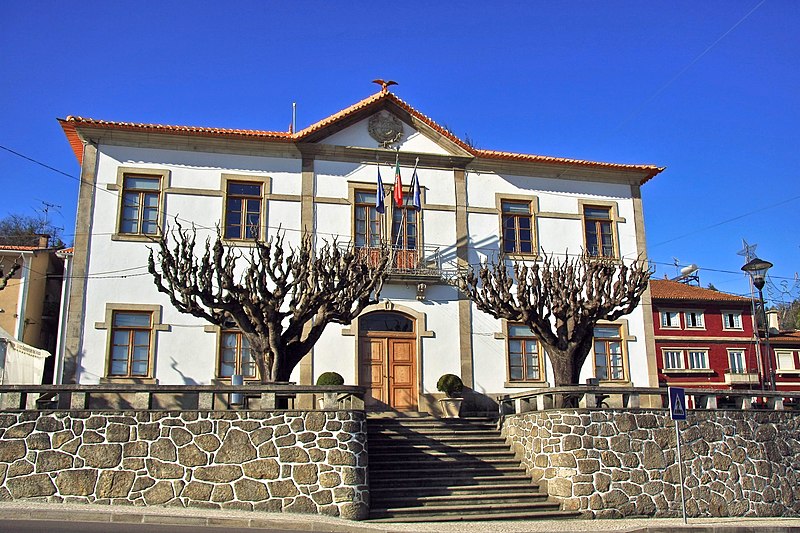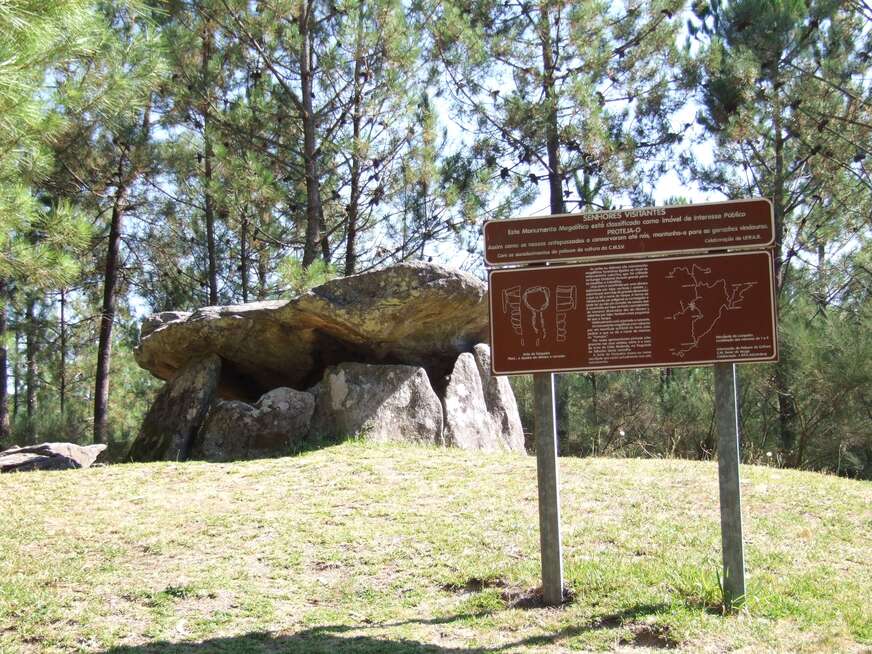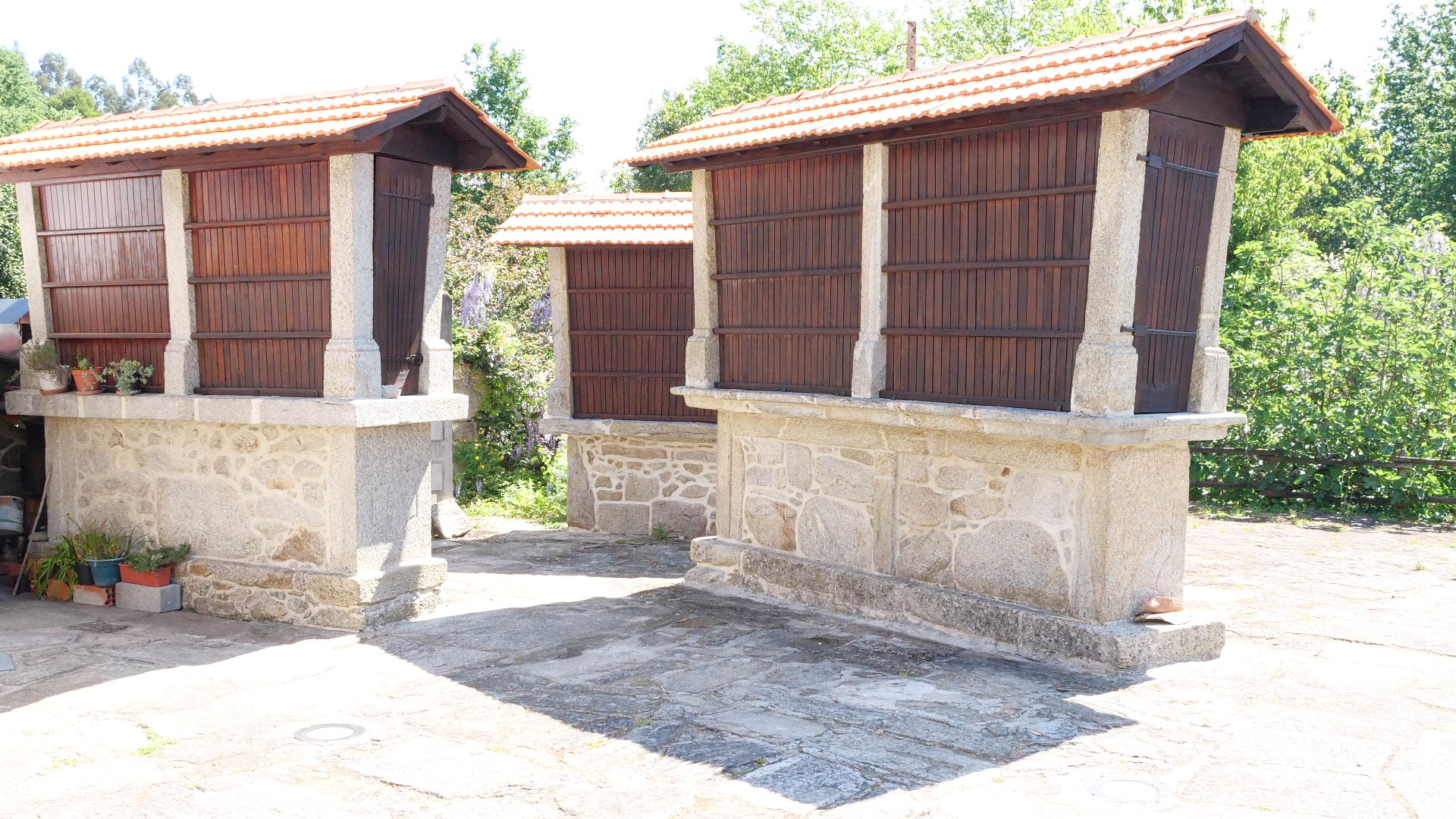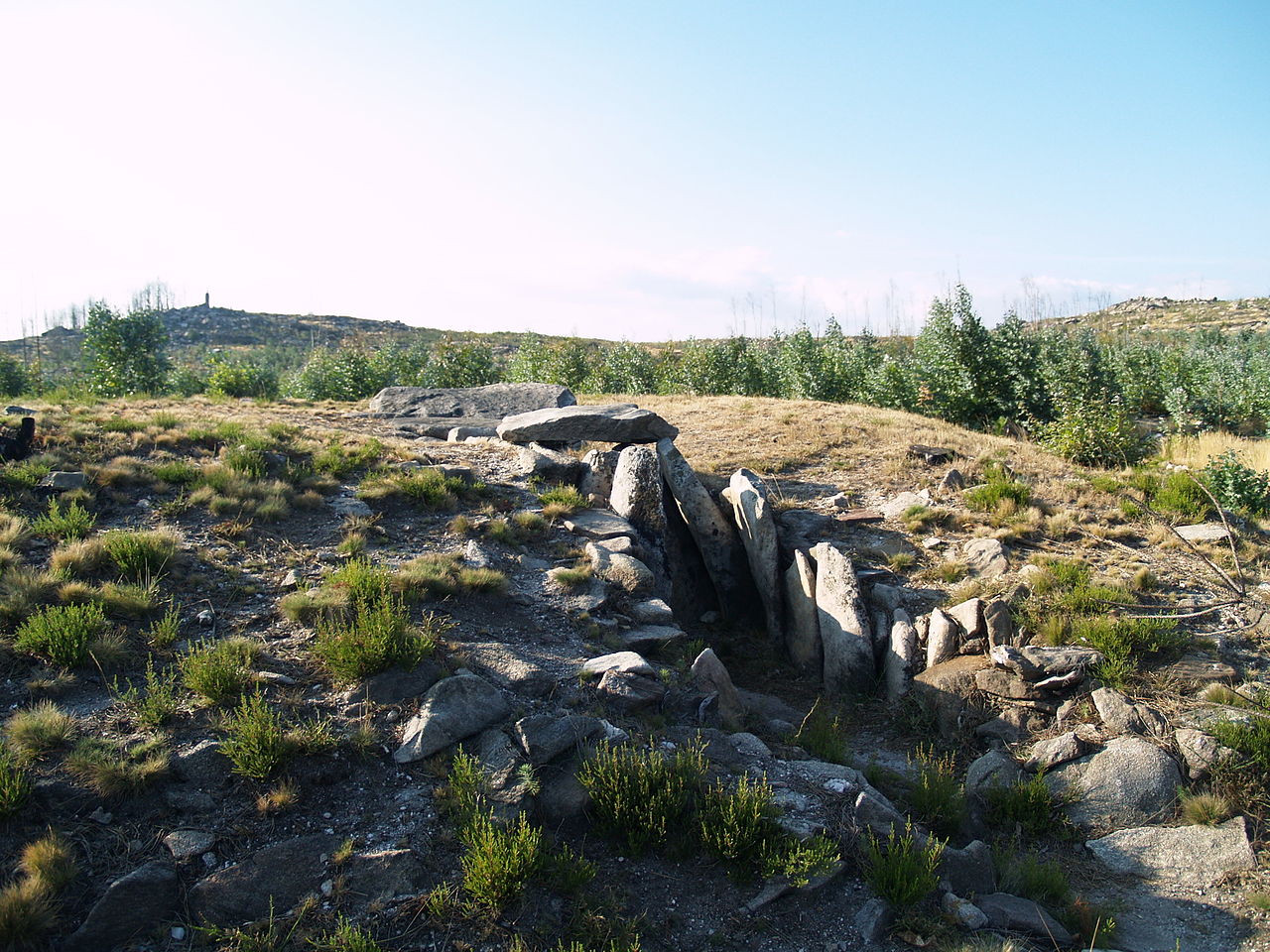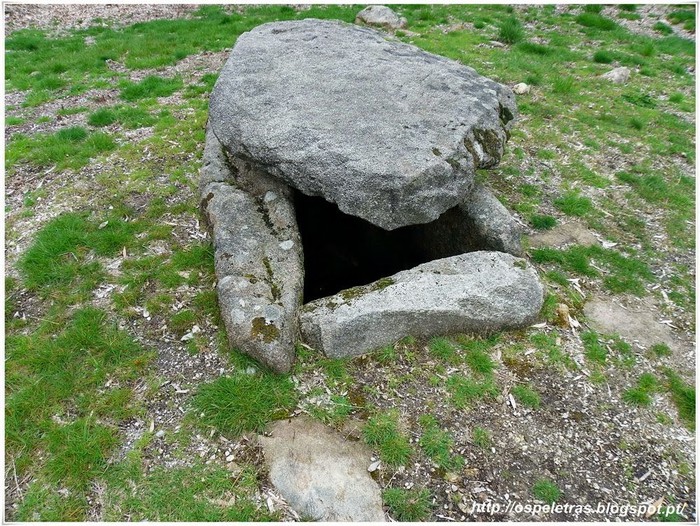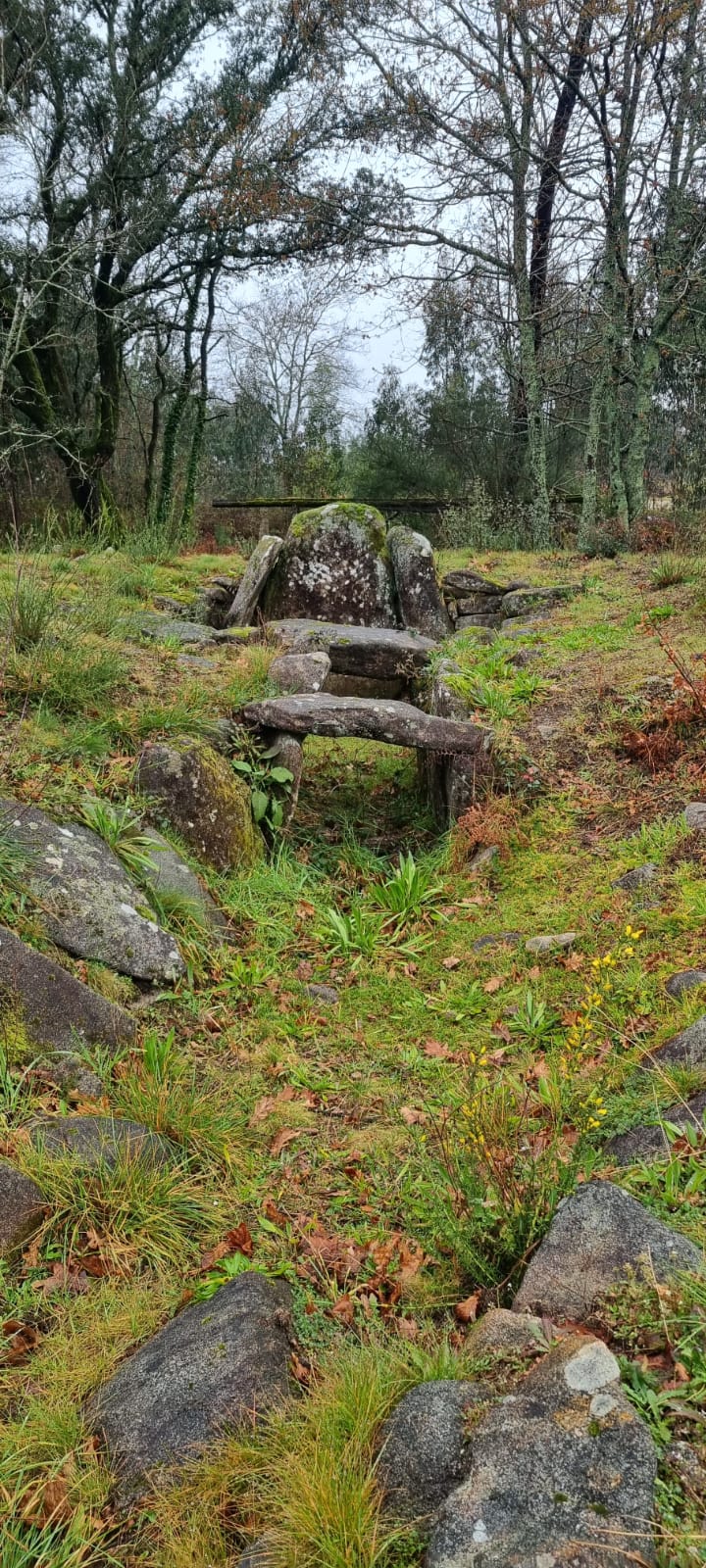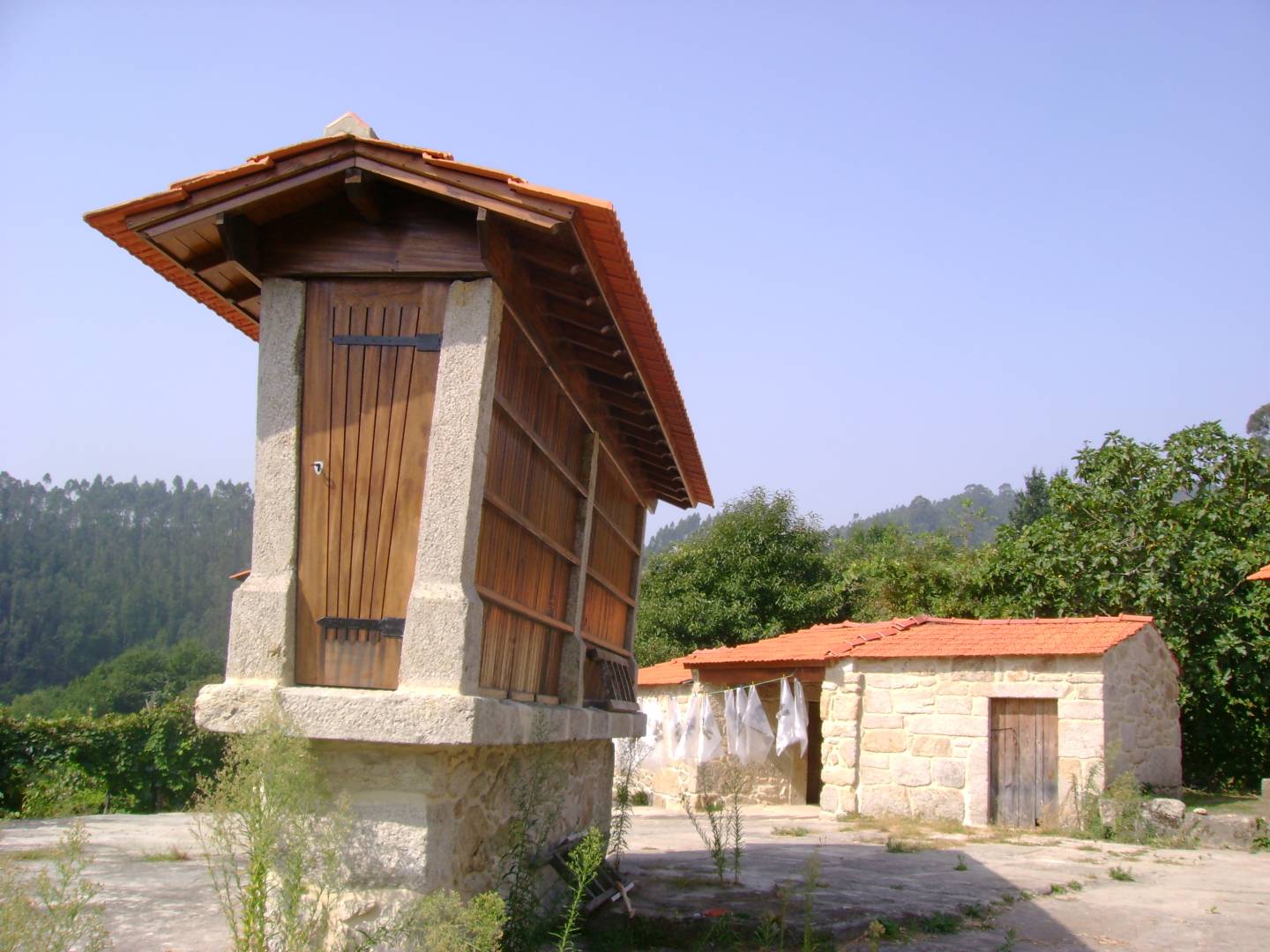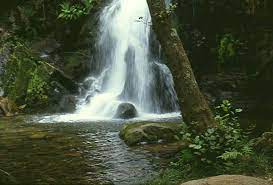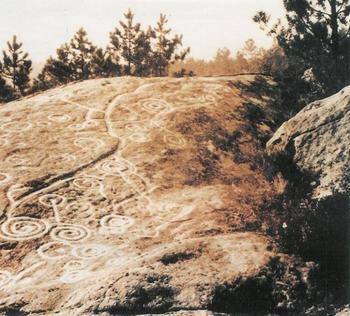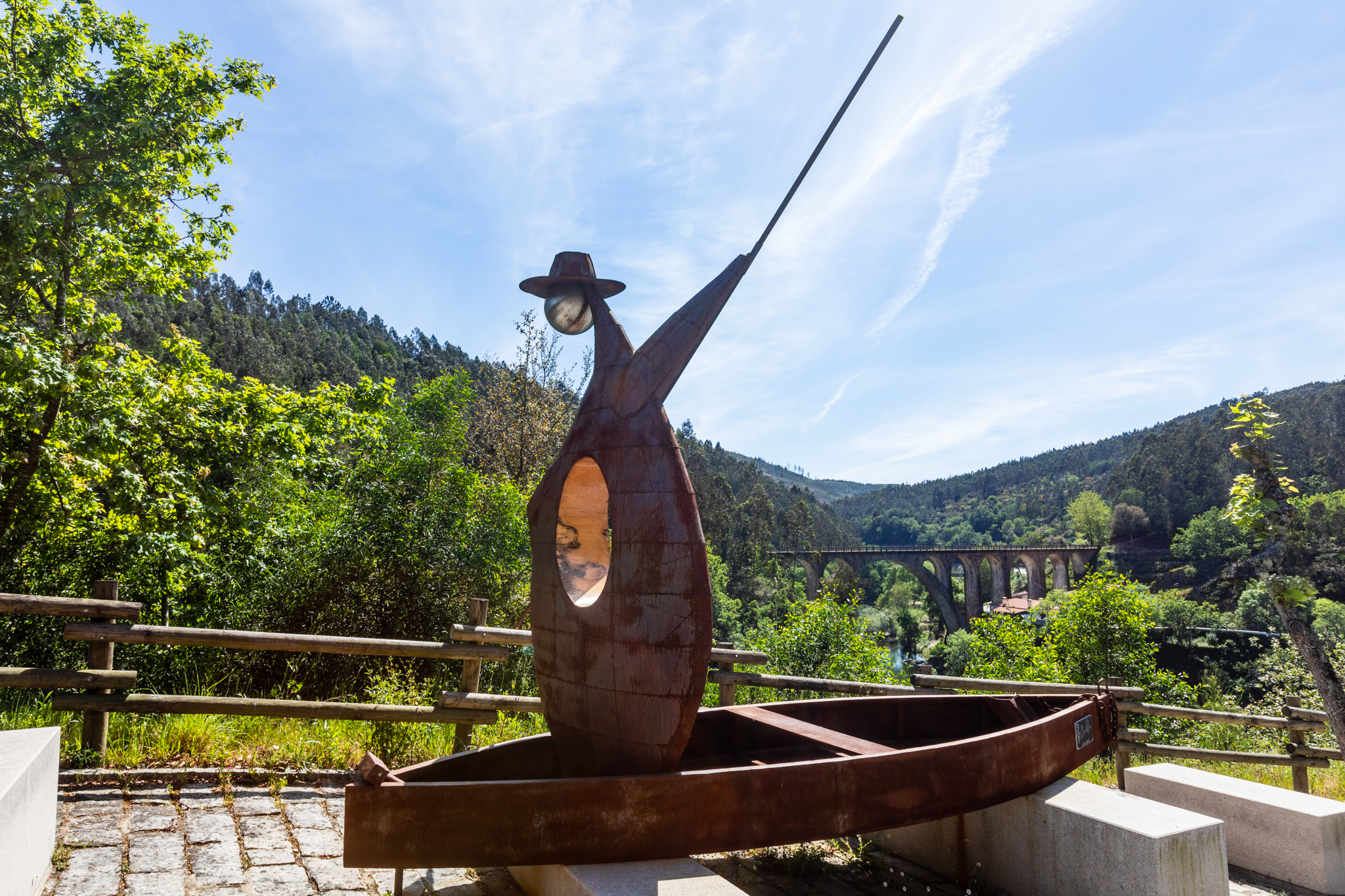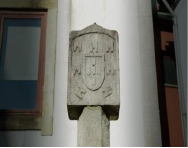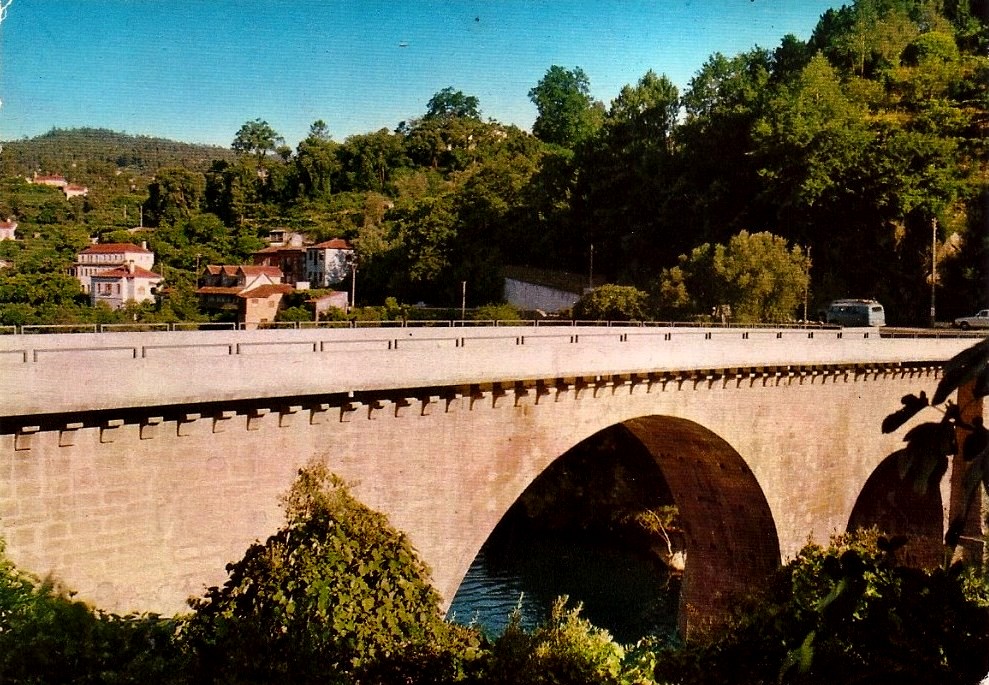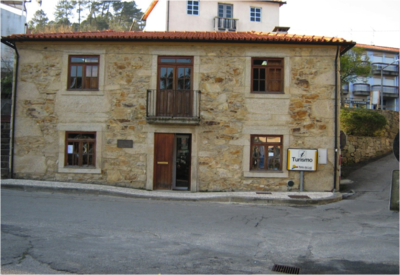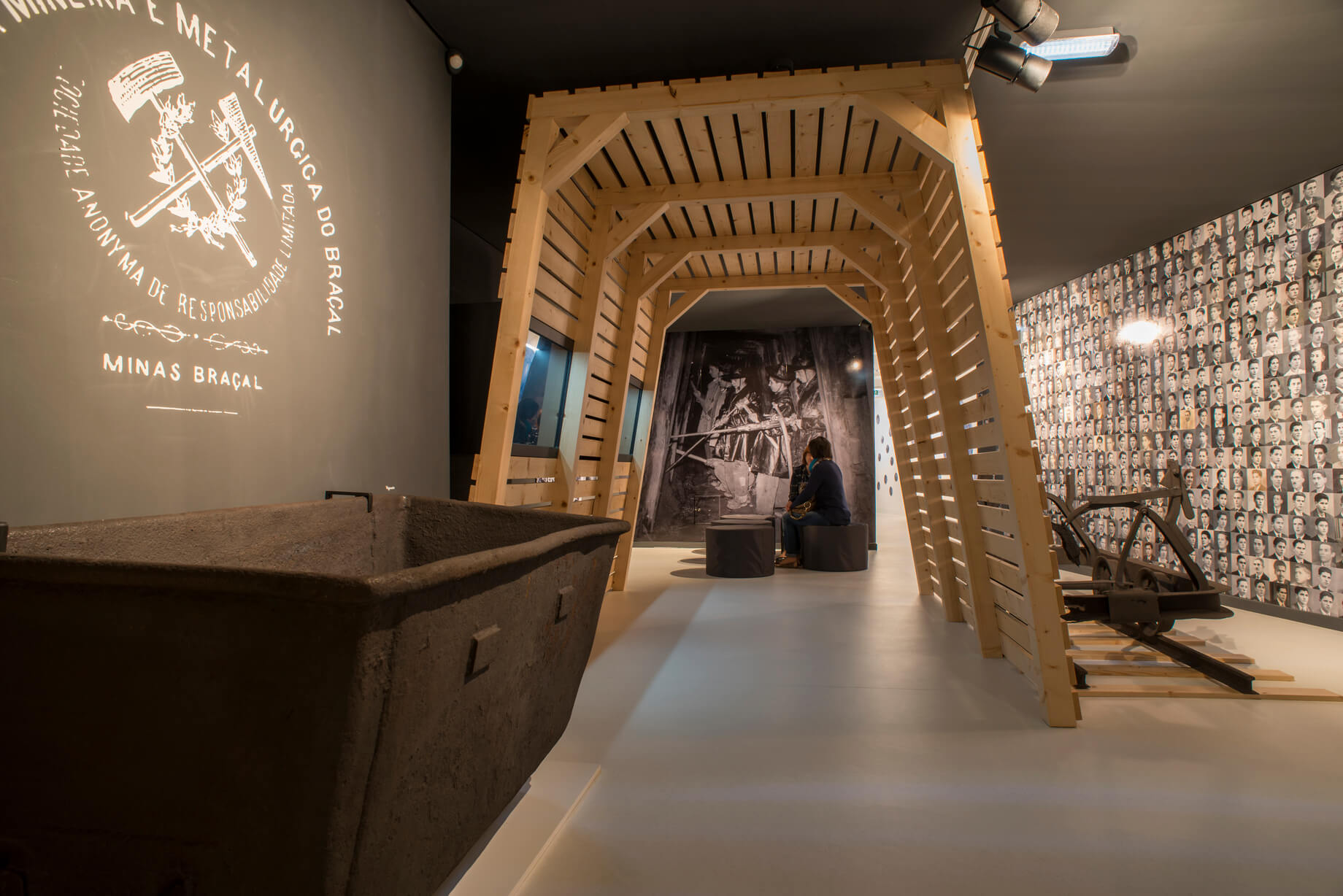A symbol of identity for the entire Sever do Vouga region. This bridge is a true work of engineering and monumental architecture, built entirely of masonry. At around 28.5 metres high, it is considered the highest stone bridge in the country. Formed by 12 arches, the main one has a span of 70 metres.
Until 1972, the long-serving Vouga Valley train, affectionately known as "Vouguinha", travelled over this bridge. It currently supports the Vouga Ecotrailway.
At around 28.5 metres high, it is considered the highest stone bridge in the country. It is made up of 12 arches, the main one spanning 70 metres.
The Vouga Ecotrailway has one of its greatest heritage attractions here, from where you can contemplate an idyllic panorama over the River Vouga and its natural surroundings.
Completed in 1913 for the new Vouga Valley Line, the Poço de S. Tiago Bridge is considered to be the highest masonry bridge on the Iberian Peninsula, at around 28 metres high. The construction, directed by François Mercier and designed by Paul Sejourné, took two years, was made with granite from local quarries and required a lot of manual labour, using ropes and wooden trusses.
In the large cove that was Poço de S. Tiago, next to the village of Pessegueiro do Vouga, the new bridge allowed the steam train to cross the river here, high up, as if flying for 165 metres and echoing its presence throughout the valley.
The mercantile boats, which for centuries travelled up and down the river, now sail under the main arch, a huge parabola with a base of 53 metres. For many years, Poço de S. Tiago was the river port for the only link between the region and Aveiro.
Now, with the disappearance of the river boats and the steam train, the waters of Poço de S. Tiago have been permanently mirrored, reflecting the sky, the trees and, above all, the centenary bridge, silent, with its 12 beautiful arches. And the relentless test of time continues to demonstrate the quality of the execution and engineering of this monumental work.


